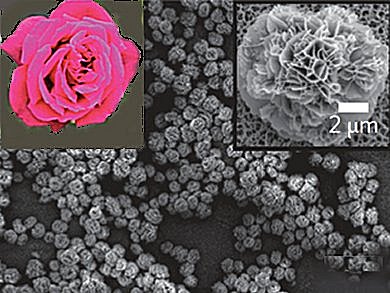Applied in catalytic and analytic sciences, nanoflowers, crystalline nanoparticles with a flower-like shape, are synthesized from inorganic components.
Jun Ge, Tsinghua University, Beijing, China, and colleagues created for the first time hybrid organic-inorganic nanoflowers using proteins and copper (II) phosphate. The team demonstrated that proteins, via nitrogen atoms in their amide groups, interact with copper (II) ions and induce nucleation of primary phosphate crystals, which act as scaffolds for the subsequent step of petals growth. During this process, proteins operate as adhesives, promoting the binding of petals to each other.
When the scientists synthesized nanoflowers using enzymes as the protein component, they observed that, once incorporated in the nanostructures, enzymes possess higher catalytic activities and stabilities as compared to their free forms. Hybrid nanoflowers are therefore promising tools to be used in biocatalytical processes, biological and biomedical fields.
- Protein–inorganic hybrid nanoflowers,
J. Ge, J. Lei, R. N. Zare,
Nature Nanotechnol. 2012.
DOI: 10.1038/NNANO.2012.80




